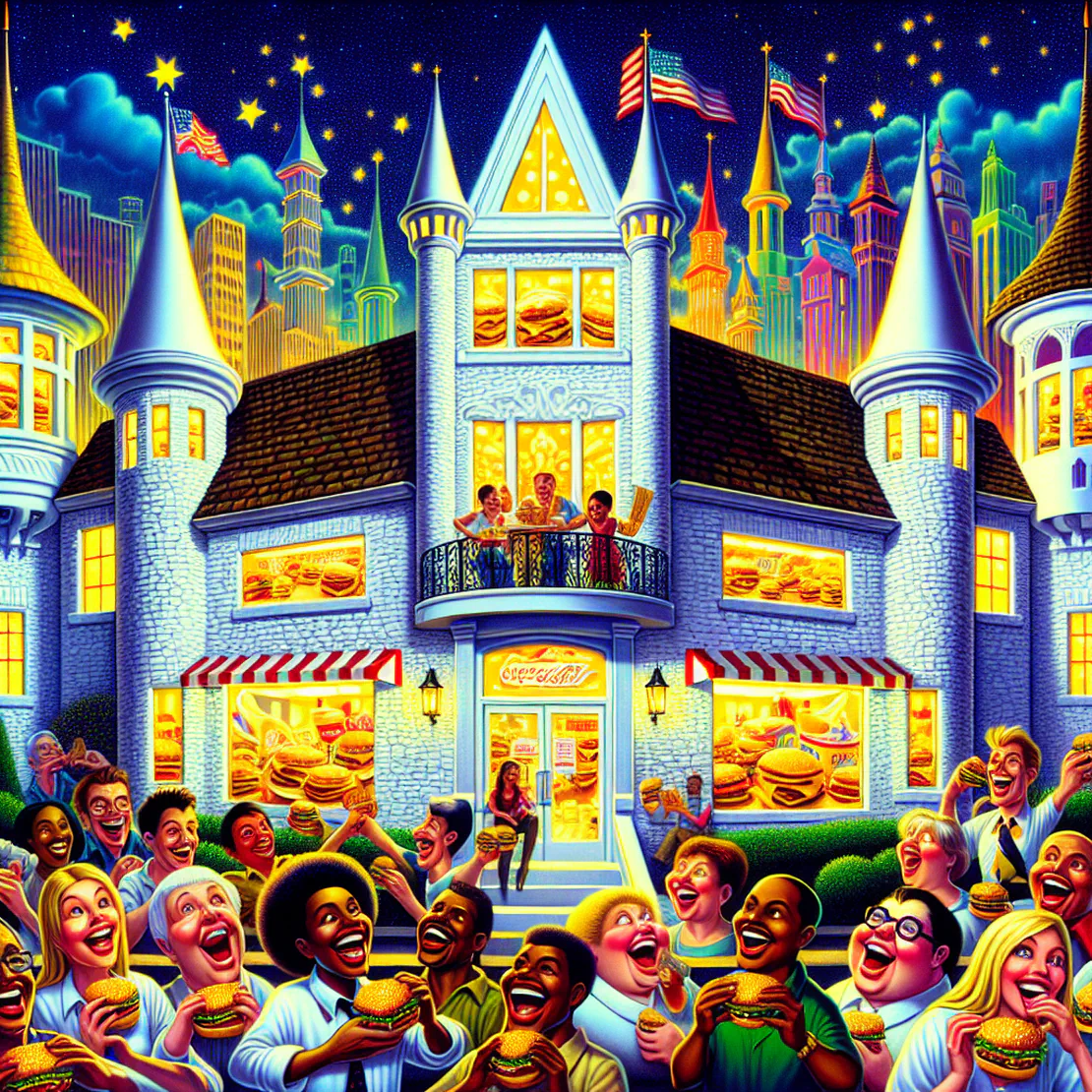
99 Percent Invisible: The White Castle System of Eating Houses
- Planet Money
- Money , White castle , Marketing
- September 16, 2024
Table of Contents
At a Glance
-
Origin of White Castle and Its Cultural Impact - ‘There is something uniquely American about the string of low-cost, burger-centric fast food chains… And that is the humble White Castle.’ This highlights the foundational role of White Castle in establishing the fast-food culture in America.
-
Unique Loyalty and Emotional Connection - ‘Our vision as a family owned business is to feed the souls of Craver Generations everywhere.’ This point shows the deep emotional connection and unique brand loyalty White Castle has cultivated among its customers.
-
Craver’s Hall of Fame - ‘Applications are evaluated by a panel of judges according to four criteria: Loyalty to the White Castle brand, creative presentation of the story, uniqueness and originality of the author’s crave.’ The existence of a Craver’s Hall of Fame underscores the intense and personal fan devotion to White Castle.
-
White Castle’s Marketing and Expansion Strategy - ‘First Laredo, then Omaha, Kansas City, St. Louis… We now have 84 in operation.’ This quote underlines the aggressive and strategic expansion of White Castle during its early years, setting a precedent in fast food franchising.
-
White Castle vs. Imitators - ‘People in cities across America said, okay, there’s something about this White Castle, we’re not sure what it is, so let’s just copy the whole damn thing.’ This highlights the influence of White Castle on the fast food industry, inspiring numerous imitators.
-
Cultural Reference and Humor - ‘Harold and Kumar have spent all night trying to make it to a White Castle location when they finally see one in the distance.’ The reference to a popular movie illustrates White Castle’s embeddedness in popular culture and its iconic status.
-
Loyalty Despite Accessibility - ‘Jeremy Brooks the White Castle super fan… lives in Kansas City where there are no Whitecastles.’ This is significant as it shows the lengths to which fans will go to obtain White Castle burgers, emphasizing the brand’s cult-like following despite geographic limitations.
-
Consistency and Quality Control - ‘Everything was scrubbed daily so it sparkled… You could watch the cook prepare your burger on a visibly clean grill in front of you.’ This point emphasizes White Castle’s commitment to cleanliness and quality from its inception, setting high standards for operations.
-
Historical Impact and Legacy - ‘Because even if it doesn’t always get the credit it deserves, we live in the world White Castle built.’ This statement at the close of the episode encapsulates the overarching theme of White Castle’s lasting influence on the fast food industry and American culture at large.
These highlights showcase both the historical significance and the light-hearted aspects of White Castle’s story, reflecting its unique place in both gastronomy and popular culture.
What to Do
-
‘Eat at places where you know what the experience is going to be like’ - This advice suggests that familiarity can provide comfort and predictability, which can be reassuring and reduce stress.
-
‘Keep your business environment clean and welcoming’ - This promotes a positive image and attracts more customers by ensuring they feel comfortable and valued in a clean setting.
-
‘Focus on customer friendliness and positive employee attitudes’ - Positive interactions enhance customer experience and can lead to higher satisfaction and repeat business.
-
‘Maintain a simple and efficient menu’ - Simplifying offerings can lead to faster service and more consistent product quality, which can improve operational efficiency and customer satisfaction.
-
‘Embrace uniqueness in your business model’ - Standing out from the competition can attract customers looking for a unique experience and can create a strong brand identity.
-
‘Adapt your business to changing environments and demographics’ - Being responsive to changes in the market and society can help maintain relevance and appeal to a broader audience.
-
‘Incorporate transparency in your operations’ - Allowing customers to see the process of how their food is prepared builds trust and reassures them about the quality of the products.
What to Get
-
White shirts, pants, and aprons - Uniform for employees to maintain a professional and clean appearance.
-
White Castle Burgers - Amazon - Specific diet used in a medical study to test health effects, which concluded that a child could subsist on this diet healthily.
Summary
In this engaging episode of the podcast, the focus is on the pioneering fast-food chain White Castle, its significant impact on American culture, and the broader implications of its business model on global fast-food industries. The episode starts with an introduction to White Castle, highlighting its unique position as the proto-burger chain that set the groundwork for the fast-food industry. The conversation delves into the history of White Castle, founded in 1921 by Walt Anderson and Billy Ingram in Wichita, Kansas. It explores how the duo introduced the concept of the modern hamburger, ensuring cleanliness and consistency that dramatically changed public perceptions of ground beef, which was previously considered low quality and unsafe.
The discussion emphasizes White Castle’s innovative practices, like their iconic small, square burgers with five holes for even cooking, and their strategic placement of restaurants in bustling urban areas to attract maximum foot traffic. The podcast also touches on the cultural impact of White Castle, mentioning its role in popular culture and movies, notably in the comedy “Harold & Kumar Go to White Castle,” which humorously chronicles a quest to find the elusive restaurant.
Moreover, the episode explores the challenges White Castle faced as many imitators emerged, diluting its brand. Despite these challenges, White Castle’s influence remained, characterized by its unique marketing strategies and customer loyalty. The episode contrasts White Castle’s approach with McDonald’s, which expanded rapidly through franchising—a strategy White Castle’s founder avoided to maintain control over quality.
The conversation wraps up by reflecting on White Castle’s legacy in the fast-food industry and its continued cult following despite its relatively small size compared to giants like McDonald’s. The episode is rich with insights into how White Castle not only shaped American fast food but also left an indelible mark on global consumer culture, making it a fascinating study of innovation, cultural impact, and business strategy.


